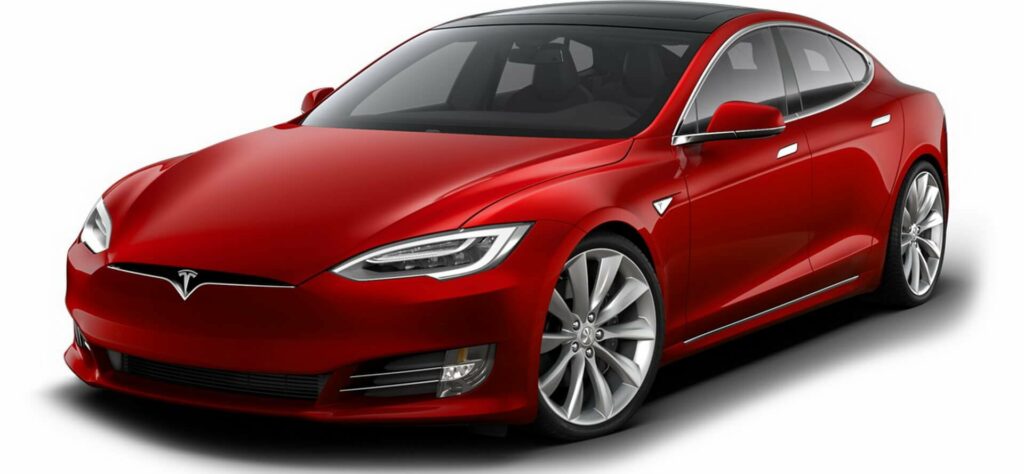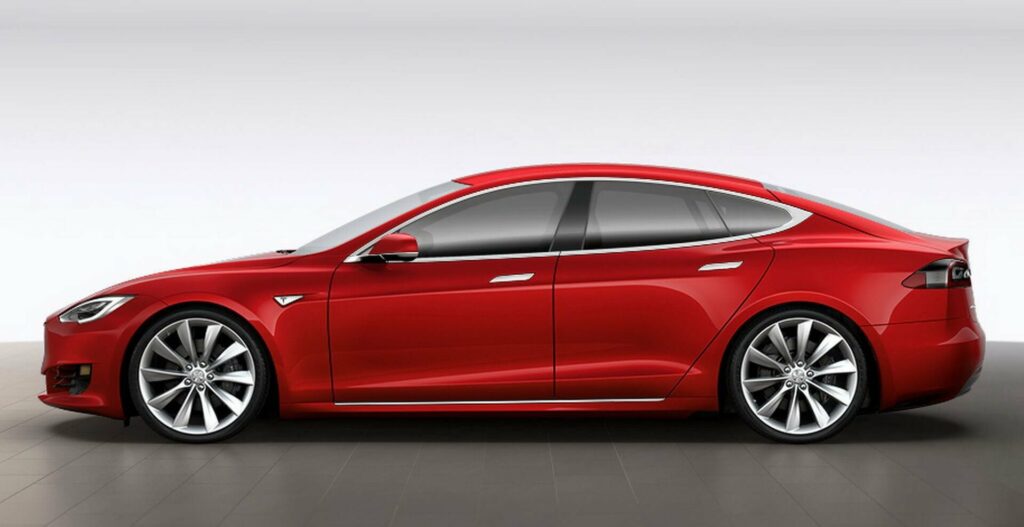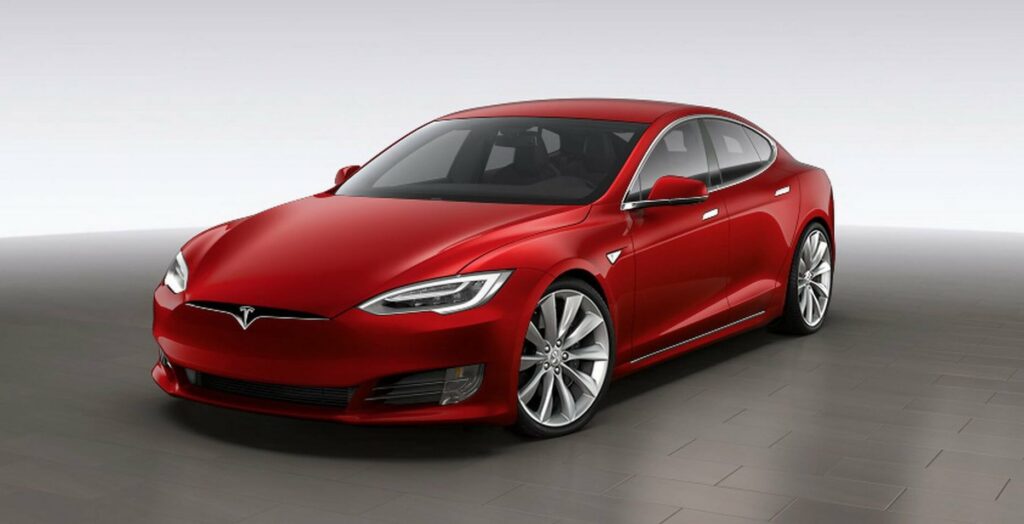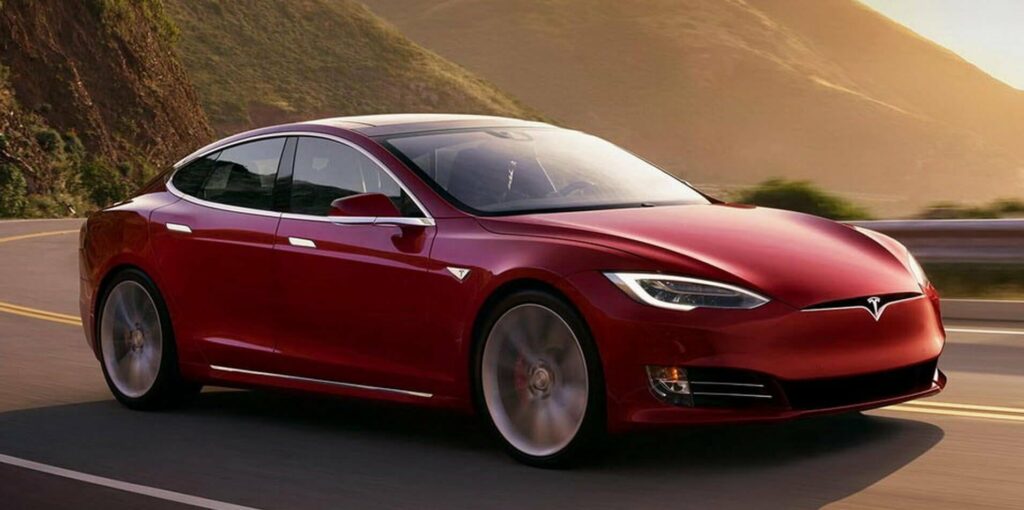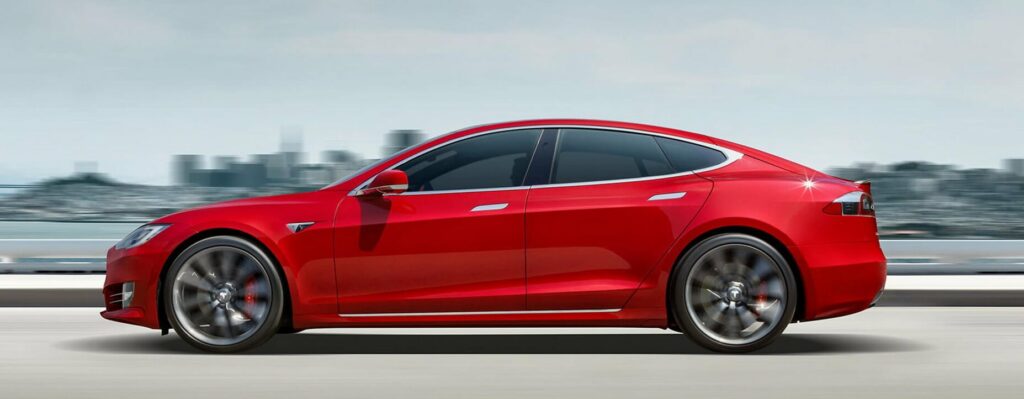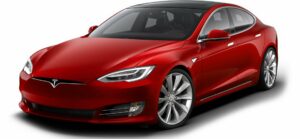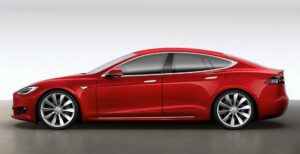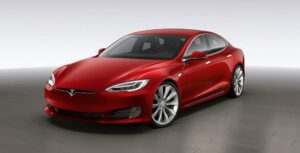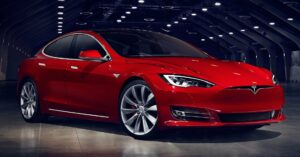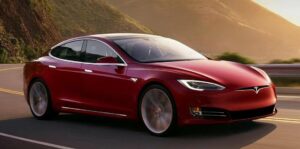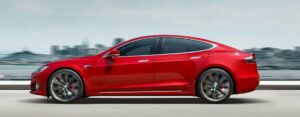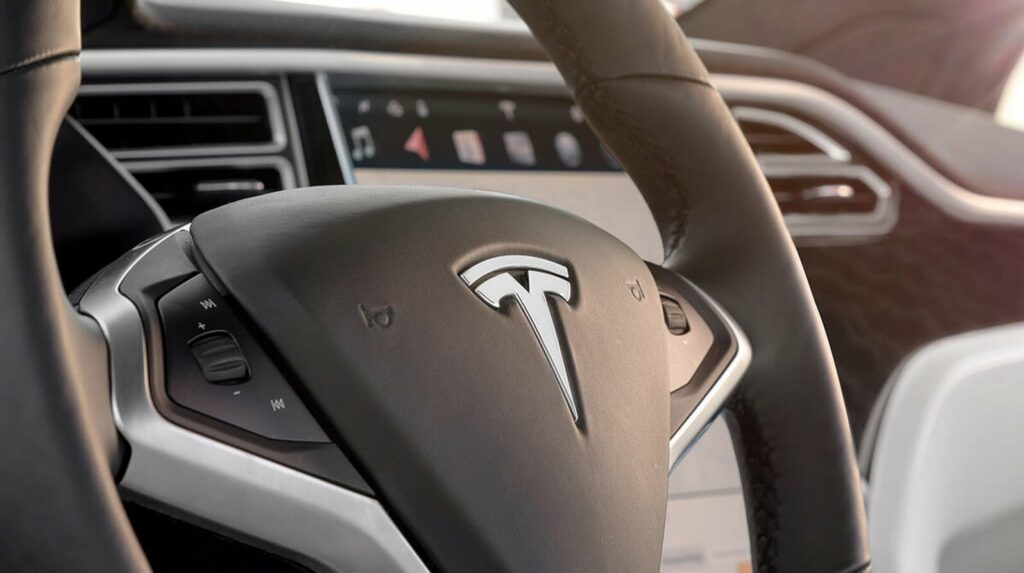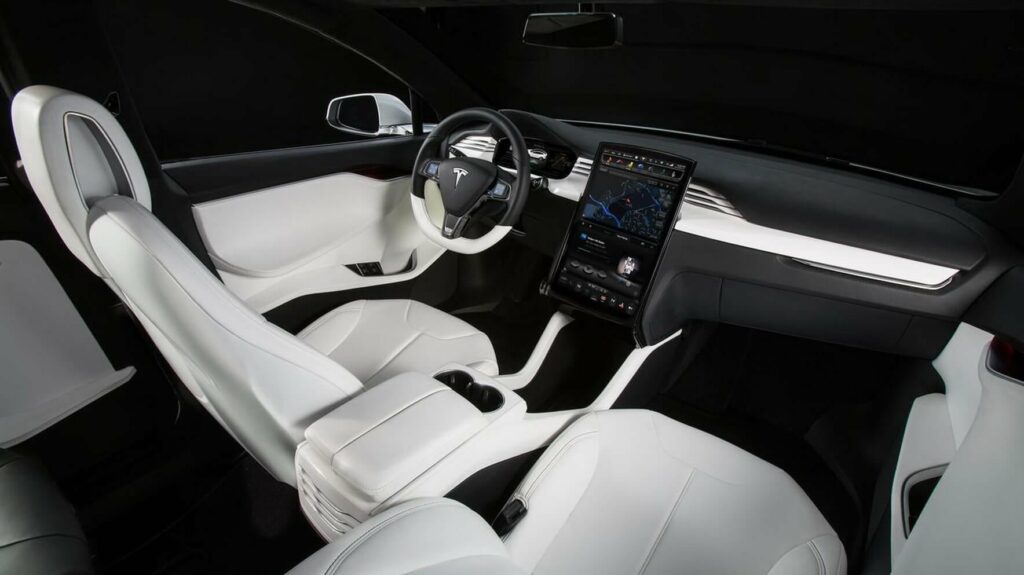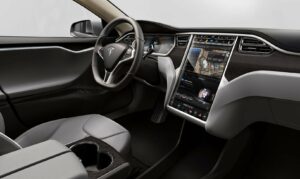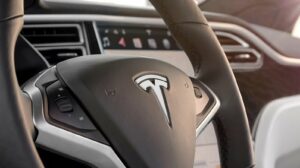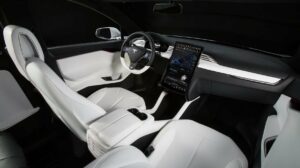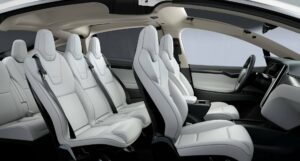Tesla Model S Long Range
The Tesla Model S Long Range is a luxury electric car that offers impressive performance, range, and features. Here are some key specs of the Tesla Model S Long Range:
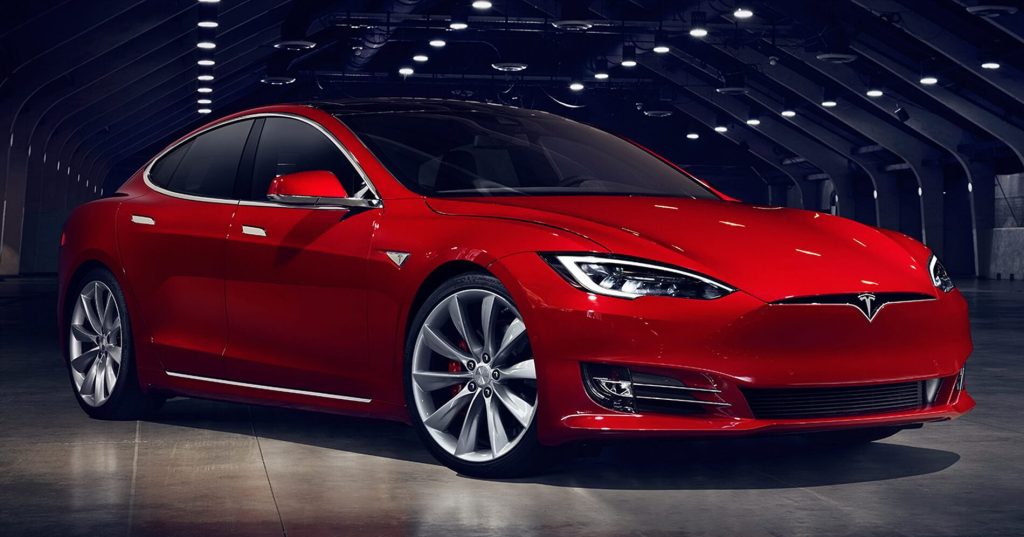
Acceleration: 1000 km/h (0-60 mph) in 3.2 seconds
Top speed: 250 km/h
Range: 555 km on a single charge
Motor: Rear electric motor, all-wheel drive optional
Power output: 500 horsepower
Torque: 1125 Nm
Battery: Long Range 95 kWh
The Model S Long Range features a sleek and modern design, with a spacious and luxurious interior that can comfortably seat up to five passengers. It comes with a range of advanced features, including Autopilot driver assistance, a large touchscreen display, and a premium sound system.
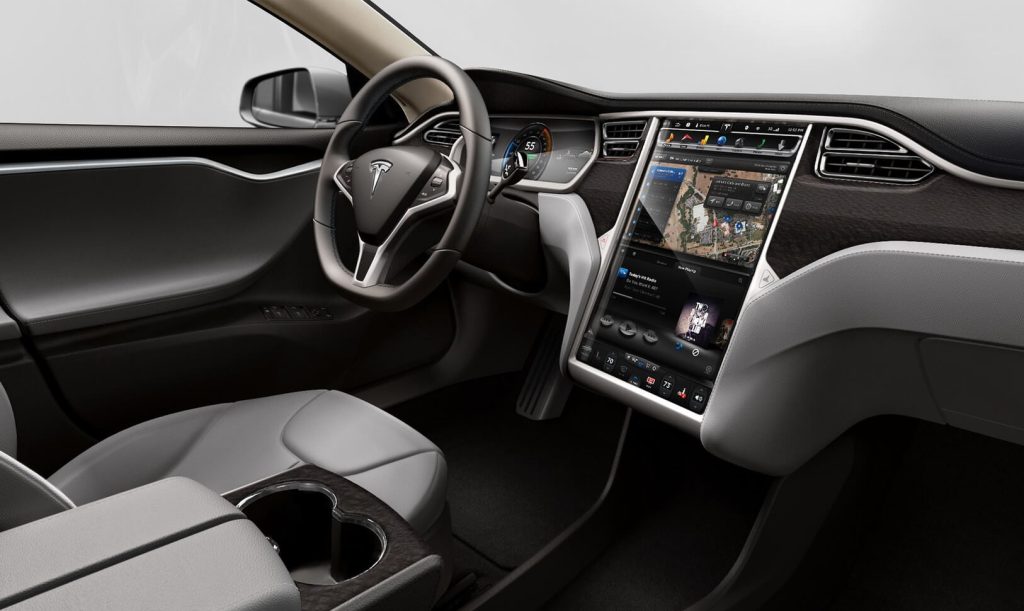
The Model S Long Range also offers a range of performance-focused upgrades, including a high-performance suspension, larger brakes, and unique 19-inch or 21-inch wheels. It also comes with Ludicrous mode, which allows the car to accelerate from 0 to 100 km/h (60 mph) in just 2.4 seconds (with the optional Plaid upgrade).
Overall, the Tesla Model S Long Range is a powerful and luxurious electric car that offers impressive performance, range, and features. It is a popular choice for those who are looking for a high-end electric vehicle that can compete with traditional gas-powered luxury cars.
| Performance | |
| Acceleration 0 – 100 km/h | 3.2 sec |
| Top Speed | 250 km/h |
| Electric Range | 555 km |
| Total Power | 500 kW (680 PS) |
| Total Torque | No Data |
| Drive | AWD |
| Battery and Charging | |
| Battery Capacity | 95.0 kWh |
| Battery Useable | 90.0 kWh |
| Europe | |
| Charge Port | Type 2 |
| Port Location | Left Side – Rear |
| Charge Power | 16.5 kW AC |
| Charge Time (0->555 km) | 6h30m |
| Charge Speed | 86 km/h |
| Fastcharge Port | Supercharger |
| FC Port Location | Left Side – Rear |
| Fastcharge Power (max) | 250 kW DC |
| Fastcharge Time (56->444 km) | 28 min |
| Fastcharge Speed | 830 km/h |
| Energy Consumption | |
| EVDB Real Range | |
| Range | 555 km |
| Vehicle Consumption | 162 Wh/km |
| CO2 Emissions | 0 g/km |
| Vehicle Fuel Equivalent | 1.8 l/100km |
| WLTP Ratings | |
| Range | 652 km |
| Rated Consumption | No Data |
| Vehicle Consumption | 138 Wh/km |
| CO2 Emissions | 0 g/km |
| Rated Fuel Equivalent | No Data |
| Vehicle Fuel Equivalent | 1.6 l/100km |
|
Rated = official figures as published by manufacturer. Rated consumption and fuel equivalency figures include charging losses.
|
|
|
Vehicle = calculated battery energy consumption used by the vehicle for propulsion and on-board systems.
|
|
| Real Energy Consumption Estimation between 114 – 225 Wh/km | |
| City – Cold Weather * | 173 Wh/km |
| Highway – Cold Weather * | 225 Wh/km |
| Combined – Cold Weather * | 196 Wh/km |
| City – Mild Weather * | 114 Wh/km |
| Highway – Mild Weather * | 171 Wh/km |
| Combined – Mild Weather * | 141 Wh/km |
| Energy use for each trip will vary considerably depending on the driver and the conditions. Therefore, we have provided a range of estimates which can be useful in developing an understanding of the potential benefits of this technology. | |
| Dimensions and Weight | |
| Length * | 4970 mm |
| Width * | 1964 mm |
| Width with mirrors * | No Data |
| Height * | 1445 mm |
| Wheelbase * | 2960 mm |
| Weight Unladen (EU) | 2069 kg |
| Gross Vehicle Weight (GVWR) | No Data |
| Max. Payload | No Data |
| Cargo Volume | 793 L |
| Cargo Volume Max | No Data |
| Cargo Volume Frunk | No Data |
| Roof Load | No Data |
| Tow Hitch Possible | No Data |
| Towing Weight Unbraked | No Data |
| Towing Weight Braked | No Data |
| Vertical Load Max | No Data |
| Miscellaneous | |
| Seats | 5 people |
| Isofix | No Data |
| Turning Circle | No Data |
| Platform | TESLA S/X |
| Car Body | Liftback Sedan |
| Segment | F – Luxury |
| Roof Rails | No Data |
| EV Dedicated Platform | Yes |
Home and Destination Charging (0 -> 100%)
A public charging station is required to use the highest possible charging rate. The EVSE/charging station’s charging capacity affects how long it takes to fully charge the battery. The table below shows all possible options for fully charging the Tesla Model S Long Range.
In Europe, plugging an electric car into an outlet is often as easy as plugging it into a household outlet, but there are differences from country to country. The table below shows the different ways to charge the Tesla Model S Long Range , but in some countries some chargers may not be available.
Type 2 ( IEC 62196)

| Charging Point | Max. Power | Power | Time | Rate |
| Wall Plug (2.3 kW) | 230V / 1x10A | 2.3 kW | 46h15m | 12 km/h |
| 1-phase 16A (3.7 kW) | 230V / 1x16A | 3.7 kW | 28h45m | 19 km/h |
| 1-phase 32A (7.4 kW) | 230V / 1x32A | 7.4 kW | 14h30m | 38 km/h |
| 3-phase 16A (11 kW) | 400V / 3x16A | 11 kW | 9h45m | 57 km/h |
| 3-phase 32A (22 kW) | 400V / 3x24A | 17 kW | 6h30m | 85 km/h |
Fast Charging (10 -> 80%)
If you want to enjoy driving an electric car, one of the most important features to consider is the number of miles per hour the car can travel while charged. This is called the “range” of the car. All electric cars have a certain range, even if they are 100% charged. This is because they do not have an internal combustion engine to lean on if you need to drive a long distance.
Max. Power: The maximum power provided by the charging point
Avg. Power: The average power provided by the charging point during a session of 10% to 80%.
Time: the time it takes to charge from 10% to 80%
Speed: the average charging rate during the session of 10% to 80%
Type 2 (IEC 62196)

| Charging Point | Max. Power | Avg. Power | Time | Rate |
| Supercharger v2 Shared (75 kW DC) | 75 kW | 70 kW | 57 min | 400 km/h |
| Supercharger v2 (150 kW DC) | 150 kW | 110 kW | 36 min | 640 km/h |
| Supercharger v3 (250 kW DC) | 250 kW | 140 kW | 28 min | 830 km/h |
| Brand | Tesla |
| Model | Model S Long Range |
| Body Style | Liftback Sedan |
| Car Engine | electric |
| Motor power | 500 |
| Maximum Torque, Nm | 1125 |
| Battery Energy, kWh | 95.0 |
| Power reserve (NEDC/EPA/WLTP), km | - / - / 555 |
| Level Charging (230/400/DC), hours | - / 6.3 / 0.28 |
| Electrical Acceleration, 0-100 km/h (0-62.1 mph) in sec | 3.2 |
| Top Speed, km/h | 250 |
